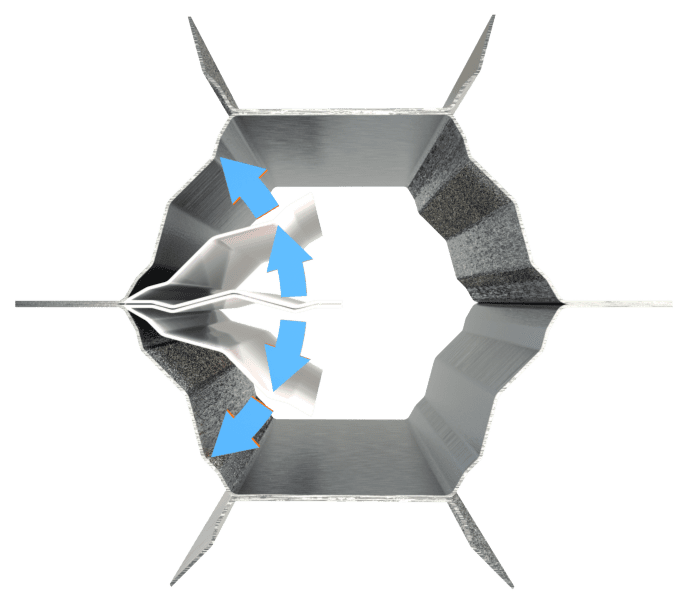
Out of plane elastic compressive properties of metallic honeycomb structures
By Frédéric Brun
JEC COMPOSITES MAGAZINE_N° 106 July 2016
Application/PDF - 0.96 MB
DownloadThis study explores the mechanical performance of a new metal honeycomb structure, developed to outdo the limitations of traditional hexagonal structures. While the hexagonal configuration is widely used in the industry, it presents a marked mechanical anisotropy, in particular in shear, promoting one direction compared to another, and undergoes parasitic deformations during complex stresses.
To improve these weaknesses, a new corrugated cellular topology has been designed. This particular geometry makes it possible to reduce anisotropy of mechanical properties, to increase formability (ability to marry complex forms without parasitic deformation behavior) and to improve adhesion with the skin of sandwich structures. It remains compatible with existing industrial manufacturing processes, which is an asset for its large -scale adoption.

Comparative mechanical tests were carried out in compression, crushing and shear depending on the standards in force. To ensure a fair comparison, the classic hexagonal structures and the modified structures have been tested with similar volume masses. The results have shown that the new structure offers mechanical performance overall higher than those of conventional hexagonal structures, even when they are dense. It has in particular better resistance to crushing and compression, and retains a very good capacity in shear, despite slight drops of rigidity in certain directions.
Another important advantage observed is a better energy absorption capacity during dynamic requests, which is crucial for protective and light structure applications. In addition, the new geometry facilitates the application of the adhesive and improves the adhesion between the nucleus and the skins, allowing a reduction in the amount of glue used.
In conclusion, this study highlights that a simple modification of cell geometry can lead to significant mechanical performance gains, while optimizing other practical aspects such as formability and assembly. This opens up interesting perspectives to develop lighter, more solid and more economical structures in sectors such as aeronautics, automotive or space.
JEC COMPOSITES MAGAZINE_N° 106 July 2016
Application/PDF - 0.96 MB
Download